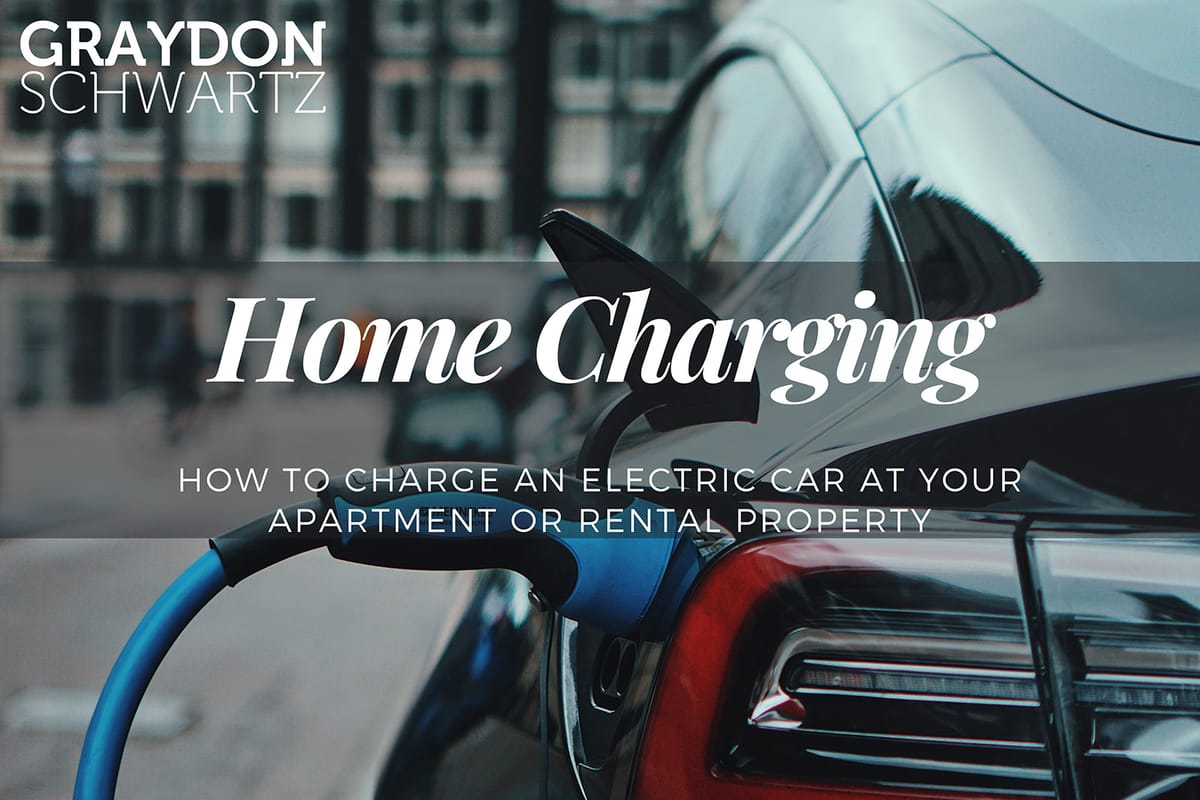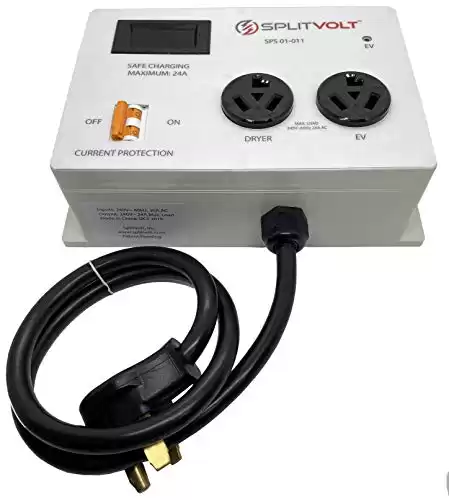How to Charge an Electric Car at Your Apartment or Rental Property

I’ve done a lot of Google searching to determine some of the best options for renters and apartment occupants. Here’s how to charge an electric car at your apartment.
Since I had two years of free supercharging and only had access to 110 volt outlets, I relied on the Tesla Supercharging Network for a long time. Thanks to new hardware that has come in the market for us, I can now charge at 22 miles per hour.
Table of Contents

Splitvolt NEMA 10-30/10-30 Splitter Switch 10-30 Plug to two10-30 Outlets (A&B) - Automatic Power Switching for Dryer and EV, Internal Safety Breaker and Real-time Display, 24 Amp, 240V EVSE
- Connects to common 220-240V 30A dryer sockets
- Flexible with four socket configurations
- It’s as simple as matching your dryer plug and charger with the image

How does it work?
The unit is mounted on the wall behind or near your dryer.
- First, plug in your dryer into the front of the unit.
- Second, plug in your EV charger.
- Plug in and power on your splitvolt splitter switch.
Using the Splitvolt Splitter Switch, you can conveniently split your 240V dryer power evenly among your EV and dryer while charging at home. Just plug it into an existing 240V dryer outlet as close to your EV as possible to get fast home charging.
It’s easy to use the electric car charger that comes with your car.
Benefits
One thing I particularly like about this solution is that someone can use the dryer whenever they like without unplugging the EV, and charging resumes after the dryer is done.
The result is that you won’t have to hire an electrician and can easily install and remove the box in a matter of minutes, without having to pay hundreds or even thousands of dollars.
It has an integrated 25A circuit breaker, which makes it safer than a basic power splitter. You may be wondering if this is really necessary since your charger cable has safety features? When you connect anything between your charger cable and outlet, you defeat those safety measures.
You might ask, why not just disconnect your dryer or other appliance and plug your cable directly into the outlet? Well, you can do that, but these high-powered outlets aren’t meant to be unplugged frequently like regular 110V outlets.
It’s also nice that it has two 10-30 outlets so the electric car doesn’t have to be manually set to 24 amps. It simply maxes out at 24 amps. You can lower if desired, but you can’t overdo it. I would rather have this option than a 50 amp plug.
How fast can it charge my Tesla?
The Tesla Model S can be charged at 17 miles per hour with a 10-30 outlet, the Tesla Model 3 at 22 miles per hour, the Model X at 14 miles per hour, and the Model Y at 21 miles per hour.
- 170 miles of range added to Tesla Model S after 10 hours.
- 220 miles of range added to Tesla Model 3 after 10 hours.
- 140 miles of range added to Tesla Model X after 10 hours.
- 210 miles of range added to Tesla Model Y after 10 hours.
Final Thoughts
With ease, you can remove the unit after your lease is up and take it with you.
You can either use it when you move to your next place or sell it to recoup some of your money.
Alternatively, if you had the property install a Tesla Wall Connector, you would have to leave it behind or pay someone to remove it, which could be costly.
If you’re an apartment dweller, the Splitvolt Splitter Switch is a great option for charging your electric car since it allows you to use your apartment’s existing electrical panel. For more information on this product or to learn about other electric vehicle products, visit the product page on Amazon today!
Disclaimer: When engaging in any endeavor, you are solely responsible for your own safety and the safety of others. The material on graydonschwartz.com is provided in hopes that you will be able to charge your EV at your apartment or rental property.
If you work with “main power” wiring, such as 120 or 240 VAC, you should consult a licensed electrician. You are responsible for verifying the accuracy of the information and its applicability to your project.
Thank you for reading! Please subscribe to my YouTube Channel if you’d like to stay in the loop on new videos or other content I create! youtube.com/graydonschwartz 🔔
Please leave a message below if you have any comments, thoughts or questions about charging your electric car at your apartment or rental property.



